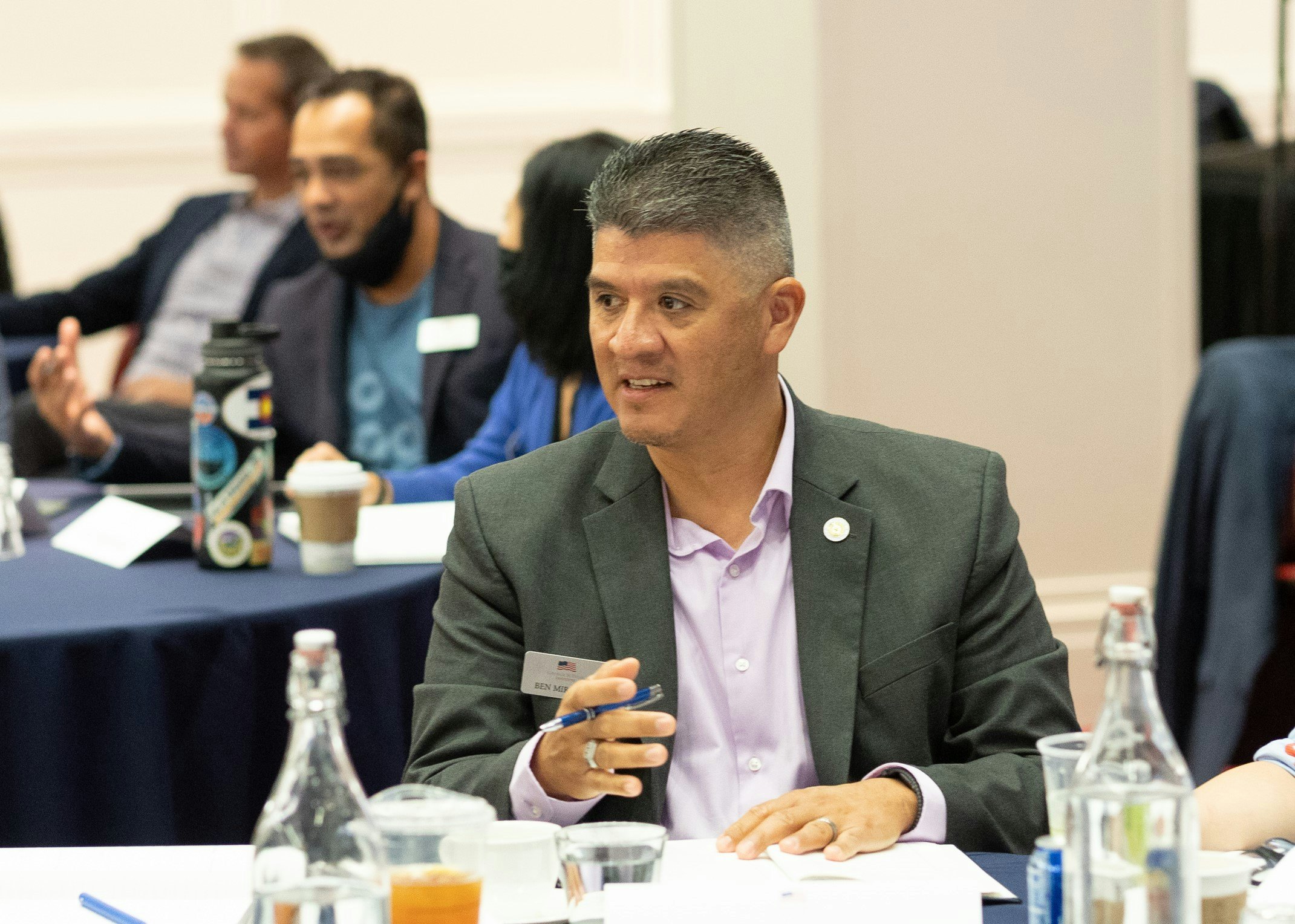These issues are not debilitating to me, they are a part of me and the experience has shaped me into who I am today.
This week, the Bush Center will host its 6th annual W100K, a 100-kilometer mountain bike ride for seriously wounded or injured post-9/11 veterans and military personnel. This event spotlights the effectiveness of sport in helping our service men and women recover from their visible and invisible wounds.
Today, we hear from a W100k alumni, Colonel Marc Hoffmeister, on his experience with the invisible wounds of war.
I was severely wounded in an IED attack in Iraq in 2007. Multiple surgeries and three and a half years of focused recovery brought me to the nearest point of ‘normal performance’ medically possible, but I will never regain full function of my left arm. I consider myself incredibly lucky that my limb was successfully salvaged despite limitations in range of motion, strength and sensation. I fought as hard to stay on active duty as I did to survive my wounds, and I succeeded. I’ve stayed on active duty despite my physical limitations, retained my assigned military specialty and have had an incredibly successful career to include additional combat deployments.
If you were to meet me in passing, join me in most physical training, or perhaps follow my pack tray as I exit an aircraft on a fully combat loaded airborne insertion, you likely wouldn’t know anything was different about me…unless I tell you my story or you glimpse the scars crisscrossing my arm, tracing the disfiguration of my forearm and bicep. That’s because I’ve made my wounds invisible to continue to serve my Nation in uniform and to be the warrior and leader I perceive myself to be for as long as my body will sustain it. But, despite outward appearances, there is a cost.
The military lexicon of invisible wounds refers to post traumatic stress disorder and/or traumatic brain injury commonly sustained from prolonged combat stress or combat injuries. I’ve been ‘diagnosed’ with both, a mild TBI from concussive force and shrapnelling sustained in the base of my skull and what my medical records referred to as ‘acute stress disorder’ after a psychologist interviewed me a month or so after returning stateside and following multiple surgeries post injury. A laughable diagnosis in that who wouldn’t be assessed with these challenges under those conditions? These issues are not debilitating to me, they are a part of me and the experience has shaped me into who I am today. I find them to be enabling if anything, giving me empathy and understanding. Many of our warriors grapple with far more severe struggles in this arena than I and I stand ready to assist those in need with a hand of experience and willingness to share your burden.
My words today, however, speak to a separate invisible wound, one that is rarely discussed but I believe is prevalent throughout our wounded warriors. It is the invisible struggle to forge a ‘new normal’, to seek out and achieve a new sense of self and identity despite carrying the burden of what the medical community defines as a disability. I have a handicap placard in my car. By all descriptions, I qualify for it though I don’t feel the need for it. I squirrel it away, embarrassed that I have it and a little fearful that my Soldiers will see it and think less of me. The same way I was annoyed by the decision to allow Soldiers to roll up their sleeves because that would expose my scars.
You see, I’ve chosen when and how to show the consequence of my injuries, and I do my best to hide what lies beneath and only share with those with a need to know. I exist in a world between a combat ready, active duty Soldier ready to deploy and fight tonight and a wounded warrior who still bears the heavy scars of combat. I constantly face the pressures of my continued service and the expectation that I represent myself as a role model despite my limitations in a very physical world. Don’t misinterpret my words, I’ve elected to walk this path and seek no sympathy. While no day is easy, I’m proud of and committed to my chosen path, despite the pain and ache of what are now becoming old wounds and the mental stress of facing each new days challenge.
I also know that I’m not the only one; while life circumstances may be different, every warrior’s struggle to define their new normal is an intimate one shaped by far more than physical limitations. In many ways, those who struggle in silence with PTSD are no different. We all choose what and with whom we will share….WE choose when to make the invisible be visible. Ironically, we rarely even discuss these challenges within our own tribe of wounded warriors.
We….you…can do better.
I’ve always been a physically driven person. My injuries forced me to discover how to mold my new normal around my old personality. My mental rehabilitation has come thru endurance sports, primarily distance running and biking as well as several high altitude climbing expeditions. The shared hardship, discipline and teamwork essential to success in these events replicates the tight bonds of combat and puts me in a comfort zone. Endless miles of trail, surrounded by the spectacle of nature, entranced by the rhythmic cadence of my beating heart and labored breath, gave me the confidence to go further and rediscover who I was. That’s also where I first learned to share but, more importantly, it’s where I first learned to listen.
See you on the trail.






























